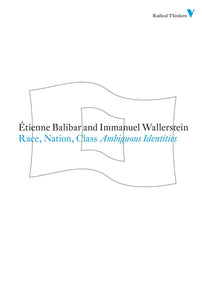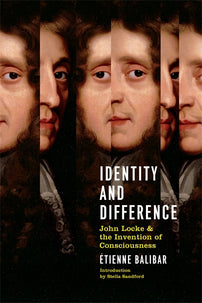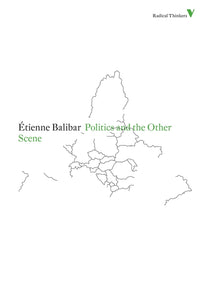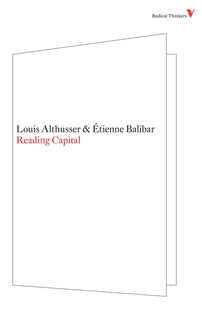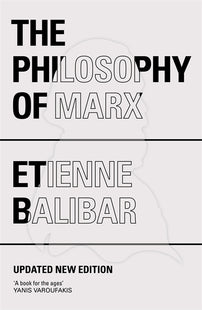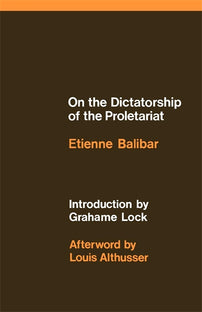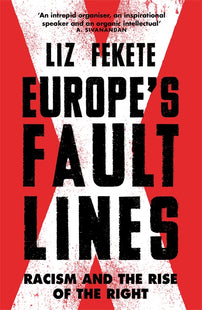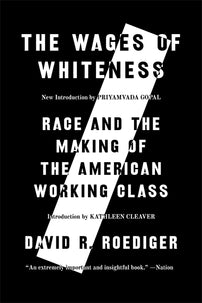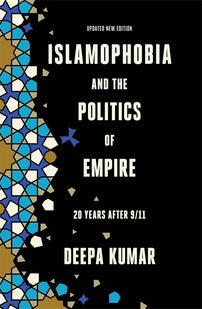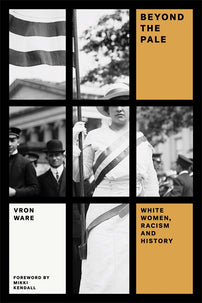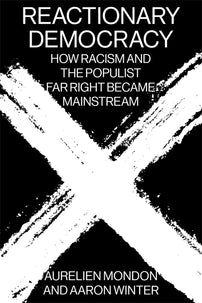Racism, Anti-Semitism, Islamophobia
Shifting demographic trends across the West, driven in part by new global migration and refugee movements, are creating both new discourses about race and forms of racism. In this essay, Etienne Balibar argues that today's analyses must examine anti-Semitism and Islamophobia together, as parallel manifestations of contemporary racism.
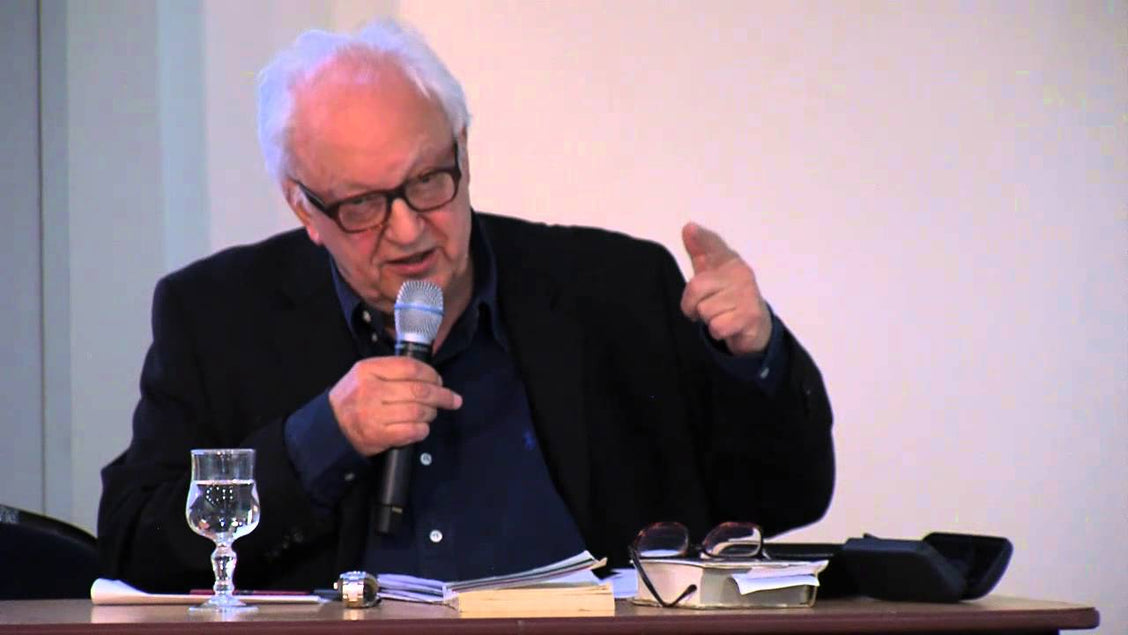
Étienne Balibar
Current debates require a re-assessment of the importance of the theological-political factor. This helps to explain why the concept of Islamophobia must be incorporated into any research programme on ‘Racism and Anti-Semitism’, especially if it is true that a policy to counter discrimination must be equally intransigent in the face of anti-Semitism and Islamophobia.
I am extremely honoured to come here to discuss contemporary racism under the patronage of Hannah Arendt and the Centre that bears her name.[1] I had proposed a working title (‘New Racism’ or ‘Neo-Racism’) in order to give myself time to reflect, but also to bridge the gap from a debate in the 1990s, to which I contributed along with others, on the shift from ‘biological racism’ to ‘cultural racism’, also known as ‘differentialist racism’ (Colette Guillaumin, Pierre-André Taguieff). Naming of this kind is not innocent. A few weeks ago, I had the unenviable honour of being attacked in the columns of the German newspaper Junge Freiheit (the organ of the neo-Nazi party Alternative für Deutschland) as the inventor of the idea of a ‘racism without races’. The author of this article explained that this kind of formulation seeks to stigmatise ‘good patriots’ who are seeking to put up a barrier against an invasion of migrants that threatens their national identity. What is certain is that in a context where controversies about the real or imagined demographic effects of migratory flows from the South to the North of the planet, following the process of decolonisation and globalisation, were beginning to find their way into the public arena, some of us wanted to study the effects of a semantic shift whereby the signifier (or name) ‘race’ is shifted along a ‘chain of equivalences’ and can be partially or completely replaced by others in its discriminatory functions, such as ‘ethnicity’, ‘culture’, ‘difference’, ‘otherness’.
Of course, it is all a question of context.[2] I do not think such discussions have lost their interest, on the contrary, but they need to be refocused and reformulated today, to take into account the trends that are coming to the fore in the current situation, where the long-standing tensions between demography and democracy, in particular, are reaching worrying levels of conflict.[3]
Ideally, of course, lengthy analyses should be devoted to this theme, which I do not have the leisure to do here, especially since I want to go as directly as possible to the idea that will constitute my main contribution to the debates of this colloquium, namely that anti-Semitism and Islamophobia are discourses of hatred that need to be examined together, by comparing their global extension, which crosses borders, and the specificity of their local manifestations. Of course, they are both part of what can be called ‘racism’ in the broadest sense. But they are also symmetrically distinct from it, although not in exactly the same way. This is due, in particular, to the singular way in which a discourse of race is articulated with a register of theological and theological-political meaning, in a sense that should also be specified. Before coming to this point, I must make two preliminary remarks of a methodological nature.
The first is that racism does not have a single form, and therefore also not a simple form. It is essentially ‘differentiated’, because it bears the traces of multiple histories, is linked to a wide variety of structures of power and discrimination, and is always combined with other political and social passions. Yet attempts are periodically made to produce a ‘definition’ of it, or to unify the different definitions of its ‘objects’. This is always problematic, but also has the advantage of pointing out strategic alternatives. The most important of these remains today, for institutional as well as intellectual reasons, the one that practically gave it its name by invoking the ‘myth of race’ as an ideological construct or projection, and remains implicit in most of our current debates, even when we question its presuppositions. It was proposed by UNESCO, on the basis of the 1948 Universal Declaration of Human Rights, in two successive declarations (‘Statements on the Race Question’) of 1950 and 1951.[4] Regretfully, I leave aside the complex history that led to the formulation of these declarations (in particular, why there were two declarations and not one, with significant differences between them, although they were intended to contribute together to the promotion of anti-racism, especially in educational settings). What I want to emphasise here is that these definitions, and the critique of the ‘biological myth of race’ from which they derive (especially the first one), were based on making a parallel between three ‘cases’ whose genealogies are in fact profoundly heterogeneous: the colour line that established social segregation in post-slavery societies (essentially the American societies of the North and South, but also apartheid South Africa); the subjugation and dehumanisation of ‘indigenous’ populations in colonial empires; and finally the persecution of the Jews which, starting in Europe, spread to other parts of the world, and found its tragic outcome in their extermination by the Nazis. Thus, it could be said that what the concept of ‘racism’ originally meant historically was the subsuming of all three cases under a single definition, which is not obvious a priori, but based on the extension of pseudo-biological theories of evolution and degeneration that were implemented to varying degrees in all three contexts.
[book-strip index="1" style="display"]My second preliminary is to return to the question of the name ‘race’ as a ‘sliding signifier’ in Stuart Hall’s theorisation. ‘Chains of equivalence’ (a notion borrowed from the work of Ernesto Laclau and Chantal Mouffe, which finds a relevant application here) include both correlates of and substitutes for the name ‘race’. In examining these, we can see that the singular importance of this name came from the fact that it connected ‘theoretical’ discourses with scientific pretensions with ‘grand narratives’ concerning the history of humanity and its cosmological significance. The combination of these narratives legitimised institutions of discrimination or elimination (with many degrees of course, and ranging from the Hispanic statutes of limpieza de sangre down to apartheid, the Black Code, the ‘code de l’indigénat’, the Nuremberg racial laws, the so-called ‘Jim Crow’ segregationist measures in the United States, etc.).
This complex was formed, for the most part, at a time when the colonisation of the world by Western European nations was taking place. It applies a genealogical scheme of origin and descent to individuals as well as to human groups, and finally to entire populations, so as to proscribe ‘miscegenation’ or ‘hybridisation’ as factors of degeneration and destruction of the ‘characteristics’ of the so-called ‘superior’ races (i.e. populations) that have become dominant in the new world-system. Hetero-racialisation (the assignment of ‘others’ to a race) always goes together with a self-racialisation (the most visible form of which is white supremacism), which is actually its purpose. The biological conception of heredity, whose justifications are based on a ‘scientific ideology’ (in Canguilhem’s sense), social Darwinism, is not the starting point. This is already a first shift. And cultural racism, or the racialisation of (ethno)cultural differences, is the result of another shift, historically linked to the processes of decolonisation and neo-colonisation. It is therefore not really ‘racism without races’, but rather a discursive formation in which the continued use of the signifier ‘race’ is accompanied by a permanent denial, in favour of notions of ‘culture’ or ‘civilisation’ which were always its historical correlates, or had served as ‘markers’ of race, along with the supposedly homogeneous physical traits specific to each subdivision of the ‘human species’. It should be noted that none of these discursive formations has ever entirely left the scene, because the social hierarchies and power relations which they legitimise, even when challenged, have not been abolished, and an essential characteristic of the genealogical scheme is its fundamentally conservative character. In addition to the permanence or renewal of social practices and institutions that function through overt or covert discrimination, we can thus explain why we are still haunted (particularly in France) by traces of slavery and the ‘colour line’, or of colonialism, and by the stigma that applies to ‘indigenes’ of non-European origin, those whom Nacira Guénif-Souilamas calls ‘descendants of’.[5]
But – and this is the crucial question I would now like to ask – should we not assume that new shifts, new metonymies of the name of race are underway, materially linked to the emergence of a new ‘Nomos of the Earth’, i.e., a new demographic and territorial model, including in particular, on a global scale, migrations, refugee movements, more or less massive displacements of populations? This is what is happening, it seems to me, and is what leads me to invoke the title of the major work published in 1950 by an ultra-conservative theorist who had succeeded in temporarily ‘forgetting’ his National Socialist past, but continued to insist on the link between any demographic and territorial ‘law of distribution’ (as evoked by the Greek category of nomos) and the construction of an ‘enemy within’.[6] Today, this enemy is increasingly identified with the other coming from the South, i.e. from the former colonial space, which forms the ‘outside’ par excellence, and yet faces us from the ‘inside’ and is always already at home when it is in ‘our home’, because of the bonds of dependence and vicinity that have been woven by history. This is reason enough for us to take very seriously the murderous ideology of the ‘great replacement’, formulated a decade ago by a French far-right literary hack (Renaud Camus), and now universally adopted by the neo-Nazi currents that are developing throughout the world under the banner of a ‘defence of the white race’ allegedly threatened with becoming a ‘minority’, if not actually disappearing, in its own countries of origin.[7]
Perhaps I am now in a position to return to the question I raised to begin with, i.e. whether anti-Semitism and Islamophobia constitute a kind of internal exception within the spectrum of racist discourses. Perhaps we should rather talk about discourses of Western racism, not so much because racism exists only in the West, which is obviously false (one only has to think of what is happening at the moment in China, Burma or India with regard to the persecution of Muslims, but, in reality, I do not see which region of the world would be immune to it today), but because, in order to discuss the problem, we have to consider it as it is posed in the place where we ourselves are located. All analysis is situated and must be aware of this. It can only grasp its ‘object’ on the condition that it measures the incidence of a ‘subject’.
I will then put forward two ideas. The first is that we must continue to count anti-Semitism and Islamophobia as types of racism in the broad sense. Both correspond to systems of persecution (‘institutional’ racism, ‘state’ racism) and elimination based on what I called above the ‘genealogical scheme’, and we observe their combination and intensification today in the ideology of violent groups that organise themselves in the name of a national or European ‘identity’ ‘threatened’ by what they call foreign elements. It is true that these same groups also develop other hate speech, especially homophobic and misogynistic. An important aspect of their ideology is the defence of ‘family values’ and ‘Christian values’, even if secularised – which brings us to the question of religion. I think that we have to go beyond this simple reference, and that in order to understand the singularity of anti-Semitism and Islamophobia in the vast spectrum of contemporary racisms, we need to invoke a religious component, and better still a theological determination. This is present in the case of both anti-Semitism and Islamophobia, where it refers to histories of ‘chosen peoples’ and ‘communities of believers’ that invest themselves with a universal ‘mission’ in history, and maintain a privileged relationship with a revealed truth and a sovereign concept of ‘law’. Of course, all this is rooted in the history of internal conflicts within the monotheistic tradition in its various branches,[8] and is therefore a symbolic element that overdetermines the discourse and the equally symbolic ‘name’ of race. One might think (many good minds around us are persuaded) that this element has been progressively erased by the process of ‘secularisation’ that is supposed to have prepared and accompanied the development of new social relations based on law and economics in capitalist modernity. This is not the case, even if the modality of collective consciousness and the degree of symbolic authority have been transformed. The philosopher Jacques Derrida once suggested that a theological power still inhabits the combination of the ideas of election (of a people, a culture, a form of state) and selection (among human populations) and holds together the discourses of racism and nationalism, thereby contributing to their capacity to penetrate collective consciousness.[9] Continuing in the same vein, I believe I can now argue that when – in the aftermath of the fight against Nazism and the revelation of the horror of the Shoah – UNESCO brought anti-Semitism together with the institution of the colour line and the reduction of indigenous people to the condition of ‘sub-humans’ under the category of ‘biological racism’, Jews were indeed represented as the evil other of the (even ‘secularised’) Christians and transformed into the internal enemies of European civilisation, despite actually being part of it themselves. But, in this singular, if not ‘privileged’, status, they were constantly compared to another figure of otherness, properly imperial: that of the ‘inferior races’ (in the French terminology of Jules Ferry) or ‘subject races’ (Lord Curzon, in the terminology of English colonialism). Sometimes situated at opposite end of the spectrum, sometimes reduced to the same level, especially when the same criteria for elimination were applied to them (something that Hannah Arendt particularly emphasised). On the surface at least, Muslims, including Arabs and other ‘ethnicities’ or ‘races’ around the world, remained assimilated to, or understood within, the figure of the indigene.
[book-strip index="2" style="display"]But this appearance is fragile. Already in the nineteenth century, Arabs and Jews found themselves in a racial construction based on philological arguments (combining comparative grammar with the history of religion, two profoundly ‘orientalist’ sciences in the sense of Edward Said, as can be clearly seen in Renan): that of the ‘Semites’, eternal enemies of the ‘Aryans’ and thus of the European ‘master race’, with whom in this fantasy they disputed the domination and governance of the world. This is, in a sense, the model or archetype to which I was aiming to return when, in the early 2000s, I proposed (after many others) to include Islamophobia in a ‘broad sense of anti-Semitism’ constituted by the combination of Judeophobia and Islamophobia.[10] Obviously, this proposal contained political intentions, which I must admit may be problematic. It was not, of course, to deny that there is a virulent anti-Semitism (Judeophobia) in the Arab-Islamic world, just as there is a virulent Islamophobia among Jews (not all, fortunately), more or less directly linked to the anti-Arab state racism that is rampant in Israel. But it was to counter the idea (particularly widespread in France) of a ‘new Judeophobia’ or a new wave of anti-Semitism whose source would essentially reside in the rallying of French (and more generally European) intellectuals to an anti-Zionism widespread (and with good reason) among Arabs and Muslims out of sympathy with the Palestinian cause. The way in which the neo-Nazi or neo-fascist groups that are flourishing in almost all European countries today closely combine Judeophobia and Islamophobia (even in the murderous attacks they perpetrate) would be enough to show that such a genealogy is too simple. But it also poses other problems.
I no longer believe in the possibility of overturning the ‘Semitic’ myth in this mechanical way. More precisely, I believe that the elements of asymmetry between Judeophobia and Islamophobia are just as important as the elements of symmetry. Clearly, these two discourses are rooted in very different histories of hostility and demonisation, some of which are linked to the age-old rivalry between Muslim and Christian ‘universalisms’ (which can be traced back to the Crusades and the Reconquista, without forgetting the decisive episode of the Egyptian expedition launched by the French Republic under the orders of General Bonaparte), others to the ghettoisation and persecution of the Jews in Europe, whether they were in the position of ‘pariahs’ or ‘parvenus’. Added to this is the very different place that Jews and Muslims occupy in the ‘Nomos of the Earth’ as this is established today, and of which the process of international migration is an intrinsic part. The Jews, especially those from Central Europe and the Russian Empire, were once the prototype of a wandering, stateless ‘people’, alternately confined and expelled from certain national territories,[11] and though they are so no longer, the imaginary trace of this is deep. Conversely, Muslims (or rather some Muslims, but a large number) today form a significant part of the wandering migrants and refugees in Europe, which reactivates their image as ‘nomads’. This facilitates their massive identification with the figure of the terrorist, as if their religion and culture had a unique predisposition to this form of anti-political action. Through old imperial stereotypes of ‘desert violence’, the negative privilege they ‘enjoy’ still continues the representation of Islam as an absolute theological other. Paradoxically, this is fed both by the idea of an immemorial enemy of Christianity (which has become ‘our Christian civilisation’) and by that of an ultra-religious group (or one whose religiosity is intrinsically excessive, totalitarian), resisting any institution of secularism (since, in a sense, it has already absorbed the secular element of civilisation in its ritualistic and legalistic code, ‘subjecting’ the entire life of believers to an undivided authority). From this point of view, there would therefore be a process of substitution rather than symmetry.
To this first element of asymmetry, I believe we can add a second. In the West, over the past half-century or so, anti-Semitism has been steadily de-racialised, that is, isolated and extracted from the ‘racial’ paradigm delegitimised by Nazism – starting, of course, with its pseudo-biological formulation, while, on the contrary, Islamophobia (and therefore its victims) is increasingly racialised, particularly in countries like France (but more generally in Europe) through the systematic confusion between representations of the ‘Muslim’ and the ‘Arab’, which takes over a colonial legacy of ‘governing Islam’ as the religion of the natives, constitutive of what can be called postcolonialism. Not only is the ‘Muslim’ incorporated as such into a racialised population whose extreme heterogeneity is neutralised, but he or she is often presented as the most formidable element, said to be a permanent danger to institutions, social order and the security of good citizens, supposedly imbued with the traditions and mores that make up ‘national identity’. On this side too, the prejudicial association with terrorism (or ‘jihadism’) brings an element that multiplies anguish and hatred, since it is supposed to express and prolong the violence of the new ‘dangerous classes’ that are par excellence the excluded young people ‘from immigration’.
As you can see, I am trying to paint a complex picture here, one that is essentially overdetermined. But to conclude these far too schematic remarks, and to open the debate, I would like to insist on the following points. First, it is absolutely necessary for the notion of Islamophobia to be incorporated as a third term in any research and discussion programme dealing with ‘racism and anti-Semitism’, as we have here today. A fortiori, this is the case for any campaign of civic education and struggle against the phenomena of hatred and contempt aimed at one or another group in our societies. This third term raises its own problems and has its own genealogy. This is why it cannot be understood implicitly as the sum of the two previous ones. Its omission, intentional or not, produces a distorting and camouflaging effect with very serious political and moral consequences.
Secondly, any policy which, in the present conditions, seeks to combat discrimination and violence, must show the same intransigence in the face of anti-Semitism and Islamophobia, not despite the existence of acute conflicts between Jews and Muslims (I should say, of course, some Jews and some Muslims, but there are many), but because of the very existence of these conflicts and the capacity they have to nourish a murderous racism throughout society. There is not and cannot be a priority in criticism, to say nothing of the obscenity of preference. Third and finally, and a little more abstractly: whatever the intrinsic conceptual difficulty of this problem, we are led once again to re-evaluate the political importance of the theological factor (or the trace of the theological) in the history of contemporary societies, obscured as it is by a certain sociological paradigm of ‘secularisation’, at least in its most reductive versions, which penetrate the discourses of ‘laïcité’ (and which, in our country at least, have the same intellectual and institutional origin). We become aware once again that racism always involves a theological dimension, at least in the broadest sense, the sources of which lie in the final analysis in symbolic constructions, but whose practical effects are terribly material. This theological and theological-political dimension never acts outside of the more ‘material’ historical and social conditions which delimit its effects, intensifying or neutralising them to a certain extent. But – as we used to say – it has a ‘relative autonomy’ that we must stop repressing.
Translated by David Fernbach
[1] This text, published on 7 May 2021 on the French website Mediapart, is an edited version of my paper given at the colloquium ‘Racism and Anti-Semitism’ organised on 10-11 October 2019 at the Hannah Arendt Center for Politics and Humanities at Bard College (USA). The original version was published with the full proceedings of the colloquium in The Journal of the Hannah Arendt Center for Politics and Humanities at Bard College, vol. 8, 2020.
[2] The model for such an analysis remains, in my view, that offered by Stuart Hall, especially in his 1994 ‘Du Bois readings’, edited by Kobena Mercer after his death as The Fateful Triangle: Race, Ethnicity, Nation, Cambridge, MA: Harvard University Press, 2017.
[3] This imposes in particular a renewed attention to the question of ‘ethnic relations’ as social relations. See the collection of writings by Véronique de Rudder, Sociologie du racisme, Paris: Syllepse 2019, as well as the works of François Héran, including Le temps des immigrés. Essai sur le destin de la population française, Paris: Seuil, 2007.
[4] See Four Statements on the Race Question, UNESCO 1969, as well as the volume that developed these insights, with the collaboration of major scientific figures (including Claude Lévi-Strauss): Le racisme devant la science, Paris, Gallimard-Unesco 1960.
[5] See Nacira Guénif-Souilamas’s blog on Mediapart. For the continuation of racial distinctions in the French West Indies beyond the abolition of slavery, see in particular Silyane Larcher, L’autre citoyen. L’idéal républicain et les Antilles après l’esclavage, Paris: Armand Colin 2014.
[6] Cf. Carl Schmitt, The Nomos of the Earth in the International Law of the Jus Publicum Europaeum, Candor, NY: Telos 2003.
[7] See Eric Ward’s presentation at this colloquium on the strategic function of anti-Semitism and Nazi genocide in the racist discourse of the world today (‘How Anti-Semitism Animates White Nationalism’). The ‘great replacement’ theory was invoked in particular by the perpetrator of the massacre of worshippers in the mosques of Christchurch, New Zealand, on 15 March 2019. It is now commonplace on the European far right.
[8] Jean-Luc Nancy has convincingly argued that, in some of its formulations at least, ‘republican secularism’ is itself a variant of monotheistic discourse: a monotheism ‘without god’, or at least without a personified god: see his article ‘Laïcité monothéiste’ in Le Monde, 1 January 2004, as well as my book Saeculum: Culture, religion, idéologie, Paris: Galilée 2012. To be continued.
[9] Jacques Derrida’s intervention at the colloquium ‘Race, Deconstruction and Critical Theory’ which we participated in together in 2003 at the University of California at Irvine. See my essay ‘Election/Selection’, in Cahier de l’Herne Derrida, edited by Marie-Louise Mallet and Ginette Michaud, Paris: Éditions de l’Herne, 2004.
[10] Étienne Balibar: ‘Un nouvel antisémitisme?’ in Antisémitisme: l’intolerable chantage. Israël-Palestine, une affaire française, Paris: La Découverte 2003, pp. 89-96.
[11] This characterisation obviously applies above all to European Jews, who were the first objects of anti-Semitism as a doctrine and a party, subsequently as a state (bio)policy, and who thus form the reference for ‘official’ definitions. It does not apply in the same way to the Jews of the Arab and Eastern world, especially the Maghrebi, who were ‘distinguished’ by the coloniser among the conquered populations and selectively ‘assimilated’. See Benjamin Stora: Les trois exils juifs d’Algérie, Paris: Stock, 2006.
